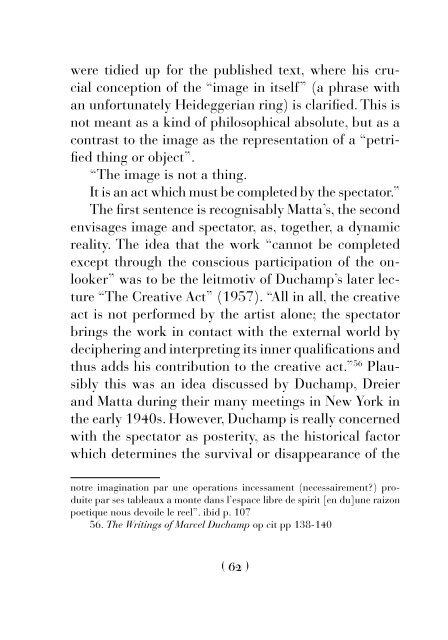Matta-Duchamp
Illustrated catalog featuring full page color illustrations and rare documentary photographs. Published by Galerie Gmurzynska in June 2018 to accompany a special cabinet exhibition at Art Basel 2018. The book includes texts by Professor Dawn Adès and Norman Rosenthal. It coincides with a broader re-evaluation of the importance of Matta internationally as well as of the influence of Duchamp on the work of 20th century artists. Edited and introduced by Krystyna Gmurzynska and Mathias Rastorfer. Essays by Dawn Adès and Norman Rosenthal. Historic interview excerpt by Robert Motherwell. 90 pages with 7 illustrations. Softcover. ISBN: 978-3-905792-09-6
Illustrated catalog featuring full page color illustrations and rare documentary photographs.
Published by Galerie Gmurzynska in June 2018 to accompany a special cabinet exhibition at Art Basel 2018. The book includes texts by Professor Dawn Adès and Norman Rosenthal. It coincides with a broader re-evaluation of the importance of Matta internationally as well as of the influence of Duchamp on the work of 20th century artists.
Edited and introduced by Krystyna Gmurzynska and Mathias Rastorfer.
Essays by Dawn Adès and Norman Rosenthal.
Historic interview excerpt by Robert Motherwell.
90 pages with 7 illustrations.
Softcover.
ISBN:
978-3-905792-09-6
You also want an ePaper? Increase the reach of your titles
YUMPU automatically turns print PDFs into web optimized ePapers that Google loves.
were tidied up for the published text, where his crucial<br />
conception of the “image in itself” (a phrase with<br />
an unfortunately Heideggerian ring) is clarified. This is<br />
not meant as a kind of philosophical absolute, but as a<br />
contrast to the image as the representation of a “petrified<br />
thing or object”.<br />
“The image is not a thing.<br />
It is an act which must be completed by the spectator.”<br />
The first sentence is recognisably <strong>Matta</strong>’s, the second<br />
envisages image and spectator, as, together, a dynamic<br />
reality. The idea that the work “cannot be completed<br />
except through the conscious participation of the onlooker”<br />
was to be the leitmotiv of <strong>Duchamp</strong>’s later lecture<br />
“The Creative Act” (1957). “All in all, the creative<br />
act is not performed by the artist alone; the spectator<br />
brings the work in contact with the external world by<br />
deciphering and interpreting its inner qualifications and<br />
thus adds his contribution to the creative act.” 56 Plausibly<br />
this was an idea discussed by <strong>Duchamp</strong>, Dreier<br />
and <strong>Matta</strong> during their many meetings in New York in<br />
the early 1940s. However, <strong>Duchamp</strong> is really concerned<br />
with the spectator as posterity, as the historical factor<br />
which determines the survival or disappearance of the<br />
notre imagination par une operations incessament (necessairement?) produite<br />
par ses tableaux a monte dans l’espace libre de spirit [en du]une raizon<br />
poetique nous devoile le reel”. ibid p. 107<br />
56. The Writings of Marcel <strong>Duchamp</strong> op cit pp 138-140<br />
( 62 )

















